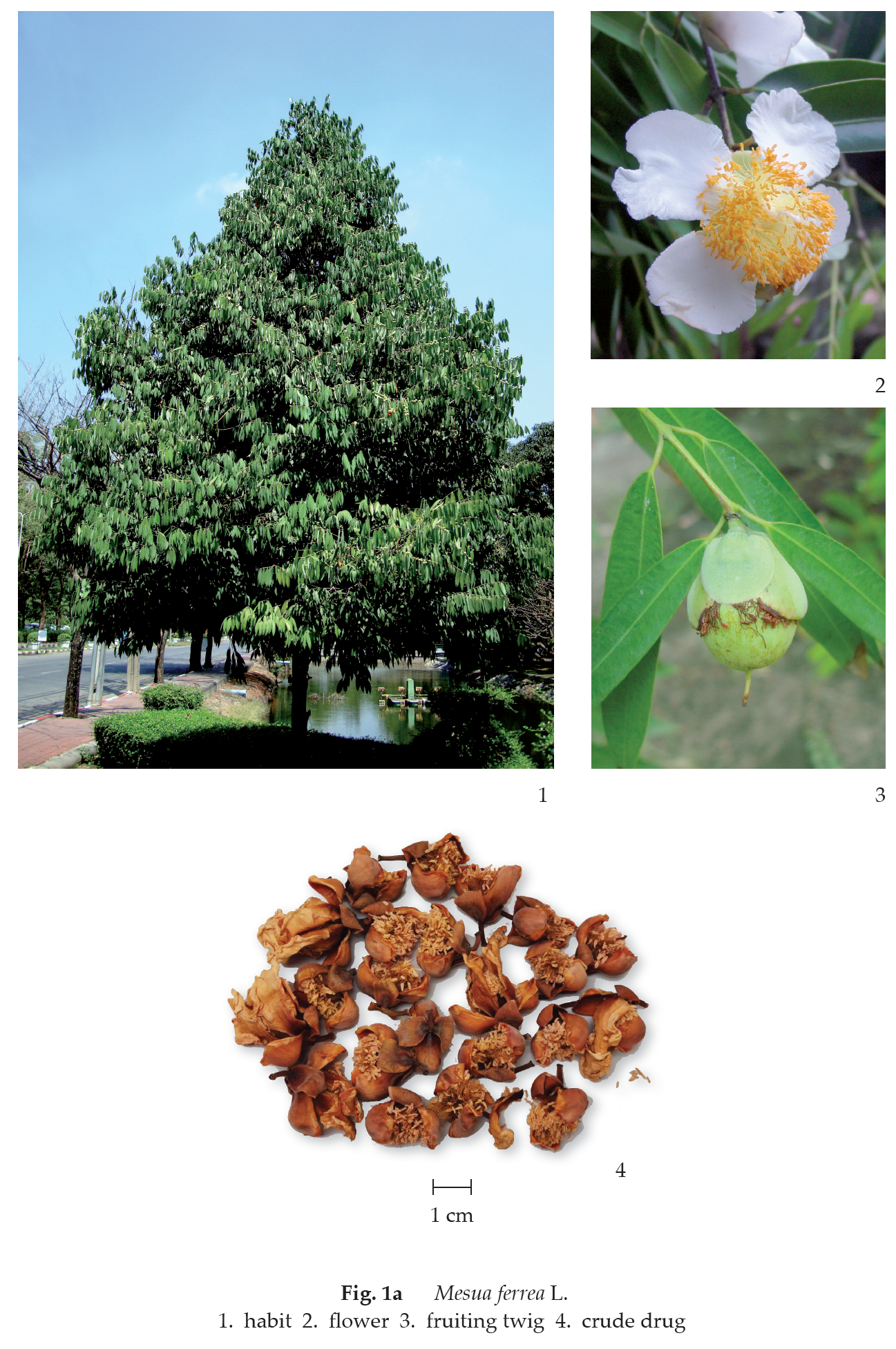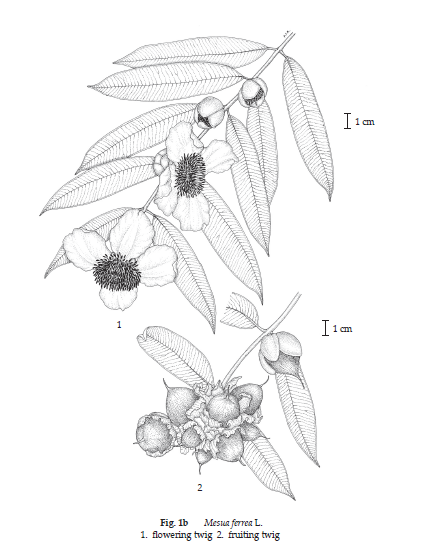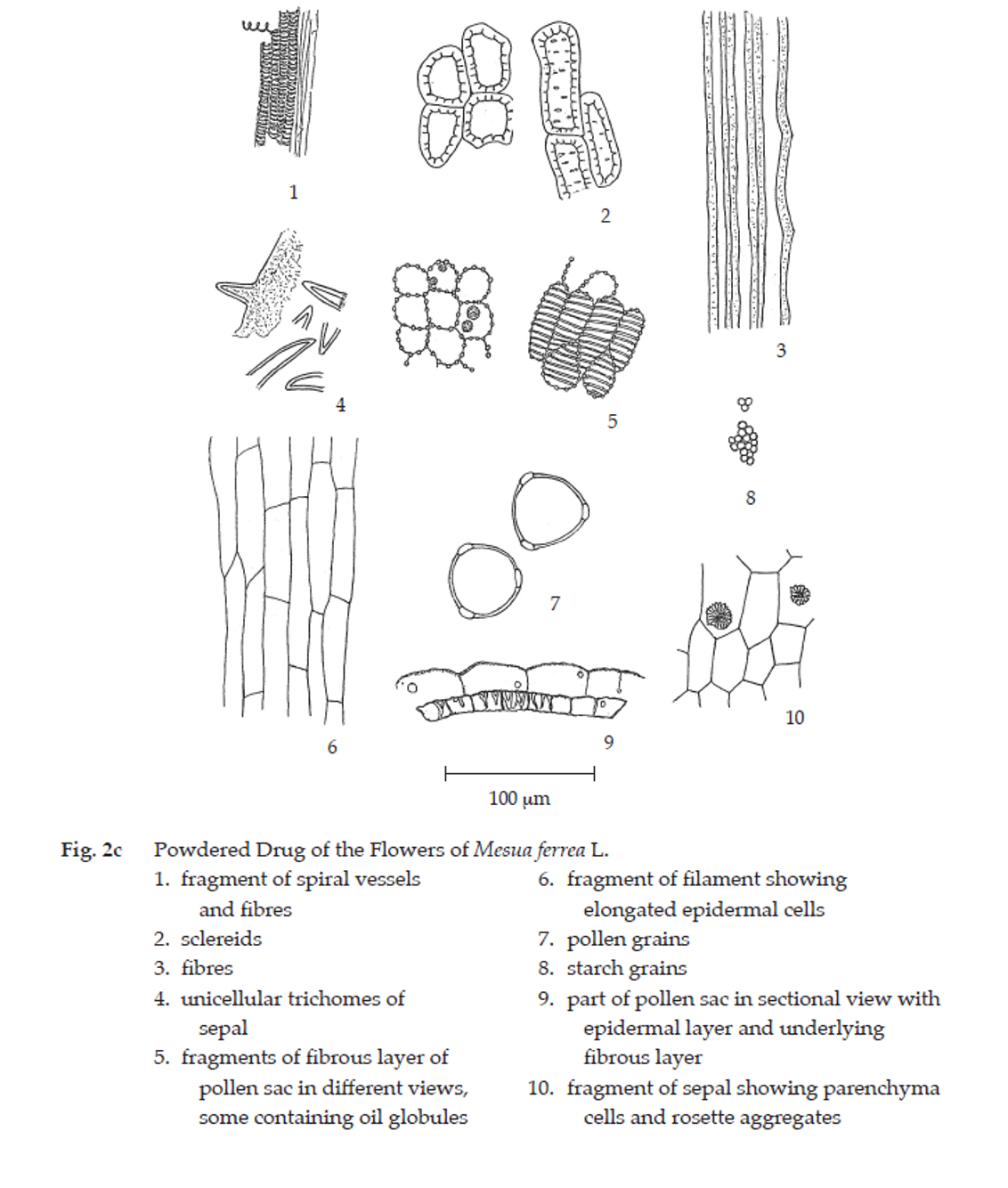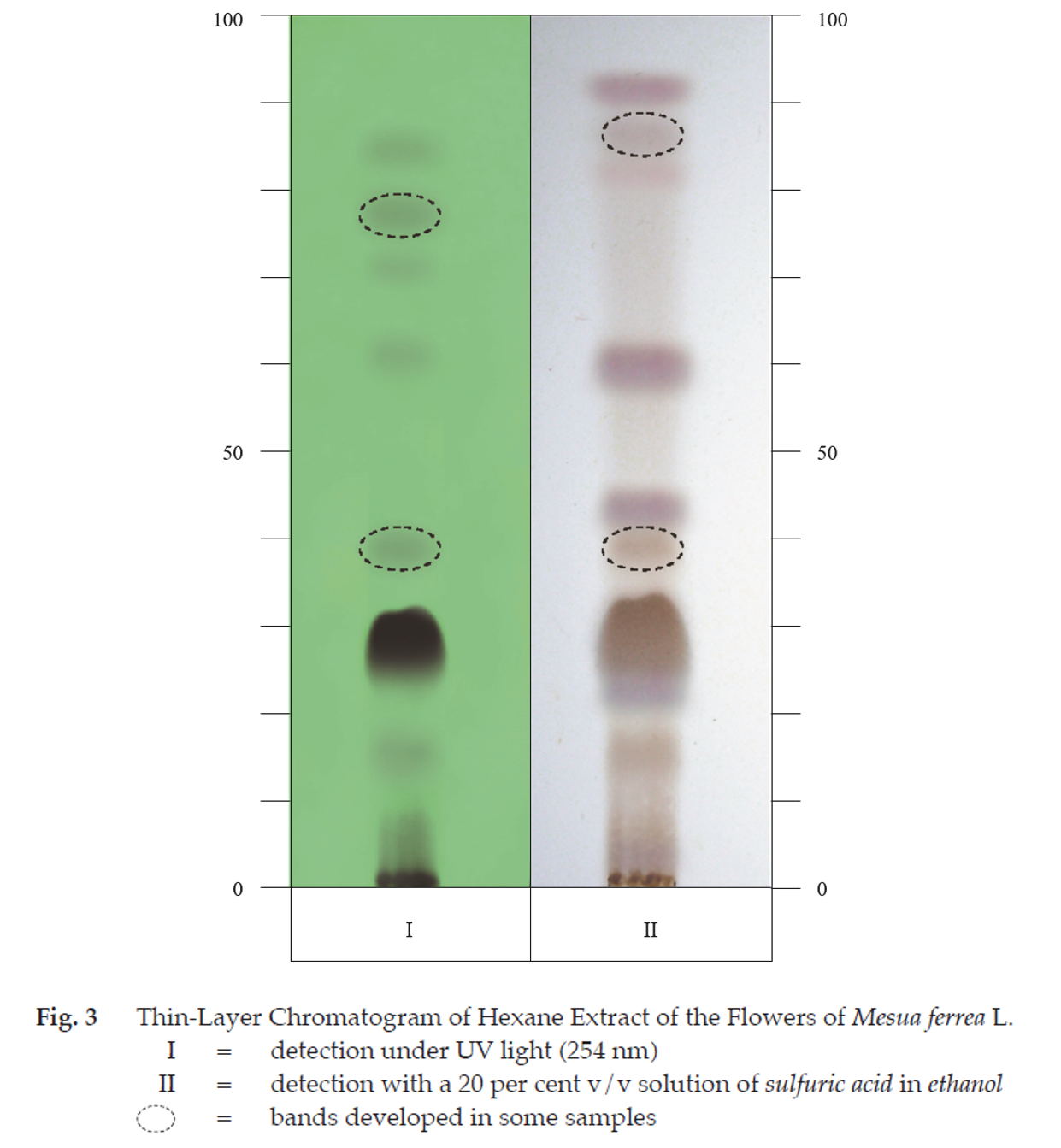ตำรามาตรฐานยาสมุนไพรไทย
Thai Herbal Pharmacopoeia
สำนักยาและวัตถุเสพติด กรมวิทยาศาสตร์การแพทย์ กระทรวงสาธารณสุข
Bureau of Drug and Narcotic, Department of Medical Sciences, Ministry of Public Health(Tinospora crispa (L.) Hook.f. & Thomson)
(Nelumbo nucifera Gaertn.)
(Centella asiatica (L.) Urb.)
(Centella Dry Extract)
(Centella Cream)
(Mesua ferrea L.)
(Piper sarmentosum Roxb.)
(Piper sarmentosum Roxb.)
(Pterocarpus santalinus L. f.)
(Santalum album L.)
(Senna tora (L.) Roxb.)
(Senna alata (L.) Roxb.)
(Senna Alata Tea)
(Piper retrofractum Vahl)
(Myristica fragrans Houtt)
(Andrographis paniculata (Burm. f.) Nees)
(Andrographis Capsules)
(Allium ascalonicum L.)
(Ocimum tenuiflorum L.)
(Curcuma longa L.)
(Turmeric Capsules)
(Turmeric Dry Extract)
(Turmeric Dry Extract Capsules)
(Arcangelisia flava (L.) Merr.)
(Curcuma sp.)
Harrisonia perforata (Blanco) Merr.
(Aristolochia pierrei Lecomte)
(Zingiber officinale Roscoe)
(Ginger Capsules)
(Ginger Tea)
(Cassia fistula L.)
(Nardostachys jatamansi (D. Don) DC.)
(Angelica sinensis (Oliv.) Diels)
Artemisia annua L.
(Ligusticum sinense Oliv. cv. Chuanxiong)
(Neopicrorhiza scrophulariiflora Pennell)
(Atractylodes lancea (Thunb.) DC.)
(Aucklandia lappa Decne)
(Terminalia chebula Retz.)
(Angelica dahurica (Hoffm.) Benth. & Hook. f. ex Franch. & Sav. var. dahurica)
(Kaempferia parviflora Wall. ex Baker)
(Hibiscus sabdariffa L.)
(Roselle Tea)
(Allium sativum L.)
(Zingiber zerumbet (L.) Sm.)
(Wurfbainia testacea (Ridl.) Škorničk.& A. D. Poulsen)
(Cannabis sativa L.)
(Myristica fragrans Houtt)
(Dracaena cochinchinensis (Lour.) S. C. Chen)
(Ficus racemosa L.)
(Hyptis suaveolens (L.) Poit.)
Clerodendrum indicum (L.) Kuntze
(Phyllanthus emblica L.)
(Citrus hystrix DC.)
(Citrus hystrix DC.)
(Areca catechu L.)
(Momordica charantia L.)
Moringa oleifera Lam.
(Aegle marmelos (L.) Corrêa)
(Solanum trilobatum L.)
(Morus alba L.)
Gynostemma pentaphyllum(Thunb.)
Makino
(Clinacanthus nutans (Burm. f.) Lindau)
(Cissus quadrangularis L.)
(Mimusops elengi L.)
(Zingiber montanum (J. König) Link. ex A. Dietr.)
(Piper betle L.)
(Capsicum annuum L.)
(Capsicum Oleoresin)
(Capsicum Gel)
(Piper nigrum L.)
(Piper nigrum L.)
(Eurycoma longifolia Jack)
(Thunbergia laurifolia Lindl.)
(Piper wallichii (Miq.) Hand.-Mazz.)
Senna garrettiana (Craib) H. S. Irwin & Barneby
(Terminalia bellirica (Gaertn.) Roxb.)
(Terminalia chebula Retz.)
(Caesalpinia bonduc (L.) H. Roxb.)
(Tarlmounia elliptica (DC.) H. Rob., S. C. Keeley, Skvaria & R. Chan)
(Hog Creeper Vine Dry Extract Capsiles)
(Hog Creeper Vine Dry Extract)
(Brachypterum scandens (Roxb.) Miq.)
(Lepidium sativum L.)
(Nigella sativa L.)
(Cuminum cyminum L.)
(Foeniculum vulgare Mill.)
(Plantago ovata Forssk.)
(Pimpinella anisum L.)
(Carum carvi L.)
(Anethum graveolens L.)
(Trachyspermum ammi (L.) Sprague)
Albizia procera (Roxb.) Benth.
(Acorus calamus L.)
(Tiliacora triandra (Colebr.) Diels)
Cyanthillium cinereum (L.) H. Rob.
(Orthosiphon aristatus (Blume) Miq.)
Murdannia loriformis (Hassk.) R. S. Rao & Kammathy
(Capparis micracantha DC.)
(Chrysopogon zizanioides (L.) Roberty)
(Cyperus rotundus L.)
(Cannabis sativa L.)
(Syzygium aromaticum (L.) Merr. & L. M. Perry)
(Boesenbergia rotunda (L.) Mansf.)
(Acanthus ebracteatus Vahl)
(Acanthus ilicifolius L.)
(Kaempferia galanga L.)
(Curcuma comosa Roxb.)
Betula alnoides Buch.-Ham. ex D. Don
Cannabis sativa L.
Carthamus tinctorius L
Mitragyna speciosa (Korth.) Havil
Mallotus repandus (Rottler) Müll. Arg
Azadirachta indica A. Juss. var. siamensis Valeton
Azadirachta indica A. Juss. var. siamensis Valeton
Punica granatum L.
Rhinacanthus nasutus (L.) Kurz
Baliospermum solanifolium (Burm.) Suresh
Curcuma aeruginosa Roxb
Boesenbergia kingii Mood & L. M. Prince
Senegalia rugata (Lam.) Britton & Rose
Acacia concinna (Willd.) DC.
Senegalia rugata (Lam.) Britton & Rose
Acacia concinna (Willd.) DC.
Senna alexandriana Mill. var. alexandriana
Cassia acutifolia Delile, Cassia angustifolia Vahl
Butea superba Roxb. ex Willd.
[Plaso superba (Roxb. ex Willd.) Kuntze, Rudolphia superba (Roxb. ex Willd.) Poir.
Pueraria candollei Graham
ex Benth. var. mirifica (Airy Shaw & Suvat.) Niyomdham
Streblus asper Lour.
Suregada multiflora (A. Juss.) Baill. (Gelonium
multiflorum A. Juss.
Plumbago zeylanica L.
Plumbago indica L.
Biancaea sappan (L.) Tod.
Ziziphus attopensis Pierre
Streblus asper Lour.
Justicia gendarussa Burm. f.
Enhalus acoroides (L. f.) Royle
Bridelia ovata Decne.
Tamarindus indica L.
Citrus × aurantiifolia (Christm.) Swingle
Garcinia mangostana L.
Blumea balsamifera (L.) DC
Persicaria odorata (Lour.) Soják
Zingiber montanum (J. König) Link ex A. Dietr.
Mammea siamensis (Miq.) T. Anderson
Citrus maxima (Burm.) Merr.
Citrus × aurantium L. ‘Som Sa’
Punica granatum L.
Rhinacanthus nasutus (L.) Kurz
Ironwood Flower is the dried blooming flower of Mesua ferrea L. (Family Clusiaceae), Herbarium Specimen Number: DMSC 5165, BKF 166239, Crude Drug Number: DMSc 0763.
Constituents Ironwood Flower contains 4-phenylcoumarins, biflavonoids, chromones, triterpenes, volatile oil, oleoresin, etc.
Description of the plant (Figs. 1a, 1b) Tree up to 30 m tall; trunk upright, cylindrical, often buttressed at base; young twig slender, exuding aromatic white resin when wounded. Leaves simple, opposite, elliptic, oblong or lanceolate, 6 to 13 cm long, 1 to 4 cm wide, apex acute, base acute or obtuse, margin entire, blade leathery, midrib faint and depressed on both surfaces, lateral veins numerous, very fine, almost invisible, lower surface whitish glaucous; young leaves reddish to pinkish; petiole 0.4 to 1.2 cm long. Flower solitary or fascicled, fragrant, axillary; peduncle 0.8 to 2.3 cm long, slender; sepals 4, light green, orbicular, 1 to 1.5 cm long, arranged in 2 rows, outer pair small, inner pair larger, densely velvety puberulous outside, fleshy; petals 4, white or pinkish, obovate or obcordate, 1.5 to 4 cm long, base cuneate, margin curled, brown or purple s triations, caducous; stamens numerous, anthers orange to golden yellow, linear, 0.4 to 1 cm long; ovary superior, ovoid, up to 5 mm long, 2-loculed, each locule 2-ovuled, style 1, about 1 cm long, stigma peltate. Fruit ovoid to ellipsoid, 2.5 to 3.5 cm long, with conical apex, striated; sepal enlarged up to 4 cm long, persistent, dark orange or purplish brown; pericarp tough. Seeds 1 to 4, up to 2.4 cm long, woody, smooth, glossy, brown, oily.
Description Odour, aromatic; taste, astringent.
Macroscopical (Fig. 1a) Complete dried flowers, broken flowers, fragments of sepals, petals and stamens are commonly found. Sepals dark brown; petals and stamens, light or golden brown.
Microscopical (Figs. 2a, 2b, 2c) Transverse section of the sepal shows rectangular cells of upper and lower epidermises, with unicellular trichomes. Mesophyll composed of polygonal parenchyma cells, some containing rosette aggregates of calcium oxalate, sclereids, resin ducts, small air spaces, and vascular bundles.
Transverse section of the petal shows rectangular cells of upper and lower epidermises. Mesophyll composed of loose polygonal parenchyma cells, resin ducts, air spaces, and vascular bundles.
Transverse section of the filament reveals a layer of epidermis with papillae, wavy parenchyma cells and a vascular bundle.
Transverse section of the anther shows 4 pollen sacs containing a layer of epidermis with papillae, a fibrous layer of pollen sac, pollen grains; at the centre comprising epidermis, parenchyma, resin ducts, and a vascular bundle.





Transverse section of the ovary shows ovary wall, 2 locules, septum, and ovules. The ovary wall composed of a layer of small epidermal cells, parenchyma cells and vascular bundles. The locules divided by a septum, each containing 2 ovules.
Ironwood Flower in powder possesses the diagnostic microscopical characters of the unground drug.
Additional information It is commonly used with other herbal drugs in Thai traditional herbal preparations.
Packaging and storage Ironwood Flower shall be kept in well-closed containers, protected from light, and stored in a dry place.
Identification
A. To 5 g of the sample, in powder, add 20 mL of ethanol, sonicate for 1 hour and filter (solution 1). To 2 mL of solution 1, add 4 or 5 pieces of magnesium ribbon, shake well and mix with a few drops of hydrochloric acid: a pink colour develops.
B. To 2 mL of solution 1, add a few drops of a 2.5 per cent w/v solution of iron(III) chloride and shake well: a blue-green colour develops.
C. Carry out the test as described in the “Thin-Layer Chromatography” (Appendix 3.1), using silica gel GF254 as the coating substance and a mixture of 80 volumes of hexane and 20 volumes of ethyl acetate as the mobile phase and allowing the solvent front to ascend 14 cm above the line of application. Apply to the plate as a band of 10 mm, 20 µL of the test solution prepared by macerating 1 g of the sample, in fine powder, with 10 mL of hexane for about 12 hours, shaking frequently, filtering and evaporating the filtrate to dryness. Dissolve the residue in 1 mL of hexane. After removal of the plate, allow it to dry in air and examine under ultraviolet light (254 nm), marking the quenching bands. Spray the plate with a 20 per cent v/v solution of sulfuric acid in ethanol and heat at 105° for 5 minutes; several bands of different colours are observed (Table 1); see also Fig. 3.
Table 1 hRf Value of Components in Hexane Extract of the Flowers of Mesua ferrea L.
| Band | hRf Value | Detection | |
| UV 254 | 20 Per Cent V/V Solution of Sulfuric Acid in Ethanol | ||
| 1 | 14-16 | quenching | pale brown |
| 2 | 23-25 | - | violet |
| 3 | 27-31 | strong quenching | brown |
| 4 | 37-40 | weak quenching | pale brown |
| 5 | 41-43 | - | purple |
| 6 | 58-61 | weak quenching | purple |
| 7 | 70-71 | weak quenching | - |
| 8 | 74-79 | weak quenching | - |
| 9 | 80-81 | - | pale purple |
| 10 | 83-84 | weak quenching | - |
| 11 | 85-88 | - | pale purple |
| 12 | 89-92 | - | purple |
Loss on drying Not more than 11.0 per cent w/w after drying at 105° to constant weight (Appendix 4.15).
Foreign matter Not more than 2.0 per cent w/w (Appendix 7.2).
Acid-insoluble ash Not more than 1.5 per cent w/w (Appendix 7.6).
Total ash Not more than 5.0 per cent w/w (Appendix 7.7).
Ethanol (80 per cent)-soluble extractive Not less than 22.5 per cent w/w (Appendix 7.12).
Water-soluble extractive Not less than 12.5 per cent w/w (Appendix 7.12).
